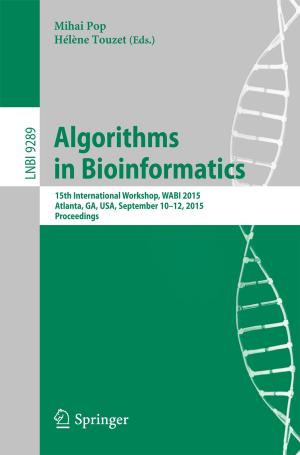The Remote Sensing of Tropospheric Composition from Space
Nonfiction, Science & Nature, Technology, Remote Sensing, Science, Biological Sciences, Environmental Science| Author: | ISBN: | 9783642147913 | |
| Publisher: | Springer Berlin Heidelberg | Publication: | January 15, 2011 |
| Imprint: | Springer | Language: | English |
| Author: | |
| ISBN: | 9783642147913 |
| Publisher: | Springer Berlin Heidelberg |
| Publication: | January 15, 2011 |
| Imprint: | Springer |
| Language: | English |
The impact of anthropogenic activities on our atmospheric environment is of growing public concern and satellite-based techniques now provide an essential component of observational strategies on regional and global scales. The purpose of this book is to summarise the state of the art in the field in general, while describing both key techniques and findings in particular. It opens with an historical perspective of the field together with the basic principles of remote sensing from space. Three chapters follow on the techniques and on the solutions to the problems associated with the various spectral regions in which observations are made. The particular challenges posed by aerosols and clouds are covered in the next two chapters. Of special importance is the accuracy and reliability of remote sensing data and these issues are covered in a chapter on validation. The final section of the book is concerned with the exploitation of data, with chapters on observational aspects, which includes both individual and synergistic studies, and on the comparison of global and regional observations with chemical transport and climate models and the added value that the interaction brings to both. The book concludes with scientific needs and likely future developments in the field, and the necessary actions to be taken if we are to have the global observation system that the Earth needs in its present, deteriorating state. The appendices provide a comprehensive list of satellite instruments, global representations of some ancillary data such as fire counts and light pollution, a list of abbreviations and acronyms, and a set of colourful timelines indicating the satellite coverage of tropospheric composition in the foreseeable future. Altogether, this book will be a timely reference and overview for anyone working at the interface of environmental, atmospheric and space sciences.
The impact of anthropogenic activities on our atmospheric environment is of growing public concern and satellite-based techniques now provide an essential component of observational strategies on regional and global scales. The purpose of this book is to summarise the state of the art in the field in general, while describing both key techniques and findings in particular. It opens with an historical perspective of the field together with the basic principles of remote sensing from space. Three chapters follow on the techniques and on the solutions to the problems associated with the various spectral regions in which observations are made. The particular challenges posed by aerosols and clouds are covered in the next two chapters. Of special importance is the accuracy and reliability of remote sensing data and these issues are covered in a chapter on validation. The final section of the book is concerned with the exploitation of data, with chapters on observational aspects, which includes both individual and synergistic studies, and on the comparison of global and regional observations with chemical transport and climate models and the added value that the interaction brings to both. The book concludes with scientific needs and likely future developments in the field, and the necessary actions to be taken if we are to have the global observation system that the Earth needs in its present, deteriorating state. The appendices provide a comprehensive list of satellite instruments, global representations of some ancillary data such as fire counts and light pollution, a list of abbreviations and acronyms, and a set of colourful timelines indicating the satellite coverage of tropospheric composition in the foreseeable future. Altogether, this book will be a timely reference and overview for anyone working at the interface of environmental, atmospheric and space sciences.















